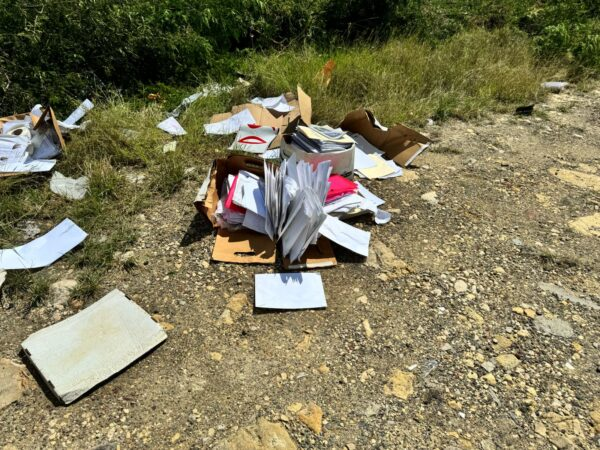In the world of real estate development, the intersection between business growth and environmental protection is growing increasingly complex. Environmental laws play a crucial role in shaping the scope, design, and execution of real estate projects. As sustainability becomes more integral to urban planning, developers face a myriad of regulations designed to protect the environment while fostering responsible growth. This article explores the key environmental laws that affect real estate development, the challenges developers face in complying with these regulations, and strategies for successful project execution.

Introduction
Real estate development is an essential part of urban growth, but it is also a major contributor to environmental impact. From land use and water management to emissions and habitat destruction, developers must navigate a series of regulations to ensure their projects are environmentally compliant. Environmental laws aim to protect the ecosystem, human health, and ensure long-term sustainability. This article will provide an overview of these laws, their influence on real estate development, and the ways developers can overcome compliance challenges while promoting eco-friendly practices.
Understanding Environmental Laws in Real Estate
Environmental laws are a set of regulations aimed at preserving natural resources, preventing pollution, and ensuring that human activities do not harm the environment. In real estate development, these laws govern various aspects of the construction process, from land acquisition and zoning to site preparation and the final structure.
The main goals of these regulations are:
- Protecting Natural Resources: Laws ensure that developers minimize harm to water bodies, air quality, and natural habitats.
- Preventing Environmental Degradation: Regulations aim to reduce pollution, waste, and hazardous chemicals in construction processes.
- Ensuring Public Health and Safety: By enforcing laws that limit emissions and waste, these regulations also safeguard the health of communities near development sites.
These laws are enforced at federal, state, and local levels, often overlapping and requiring developers to comply with multiple regulations. Failure to adhere to these laws can result in costly fines, project delays, or even complete shutdowns.
Key Environmental Laws Affecting Real Estate Development
Several critical environmental laws shape how real estate developers approach their projects. Below are some of the most influential:
The National Environmental Policy Act (NEPA)
NEPA requires that federal agencies consider the environmental effects of their actions before making decisions. For real estate projects that involve federal funding, permits, or land, an Environmental Impact Statement (EIS) is typically required. This comprehensive document evaluates the environmental risks associated with a project, such as the impact on local wildlife, air quality, and water resources. NEPA compliance can delay development but ensures that environmental concerns are prioritized early in the planning process.
Clean Water Act (CWA)
The Clean Water Act regulates the discharge of pollutants into U.S. waters and sets quality standards for surface waters. Developers must seek permits before impacting wetlands, streams, or other water bodies. These permits ensure that construction does not degrade water quality through stormwater runoff, chemical spills, or other harmful activities. Compliance with the CWA is crucial for developers to avoid penalties and ensure the long-term sustainability of local water systems.
Clean Air Act (CAA)
This law establishes limits on air pollutants emitted by various industries, including construction. Developers must adhere to air quality standards during the building process, particularly when using heavy machinery, generating dust, or handling chemicals. The CAA is increasingly important as cities work to reduce urban air pollution, and failure to meet its standards can result in severe penalties or project delays.
Endangered Species Act (ESA)
The ESA protects species that are endangered or threatened, requiring developers to assess and mitigate potential impacts to these species and their habitats. Real estate projects that disrupt habitats of endangered species may face restrictions or even halts until mitigation strategies are in place. This can include redesigning the project to preserve critical habitats or compensating for environmental damage.
Comprehensive Environmental Response, Compensation, and Liability Act (CERCLA)
Commonly known as the Superfund law, CERCLA governs the cleanup of contaminated sites, including brownfields and other polluted areas. Real estate developers looking to redevelop such sites must assess potential liabilities and may be responsible for the costs of remediation. In cases of legacy pollution, developers must ensure that they do not inherit unaddressed environmental liabilities from previous property owners.
State and Local Environmental Regulations
In addition to federal laws, developers must also comply with state and local environmental regulations. These may vary significantly depending on location, with some states having more stringent rules for waste management, energy efficiency, and conservation practices. Local zoning laws can also have a significant impact on land use, especially regarding environmental concerns such as water management and green space.
Impact of Environmental Laws on Project Planning
Environmental laws affect every stage of real estate development, from site selection to project completion. Below are some of the key areas where these laws influence the planning process:
Site Selection
When selecting land for development, developers must evaluate environmental factors, such as whether the site is located in a floodplain, wetlands, or an area with endangered species. Certain sites may be off-limits due to zoning regulations or the presence of protected areas. Conducting a thorough environmental site assessment (ESA) helps identify these issues early on, ensuring that the chosen location complies with environmental laws.
Environmental Due Diligence
Developers are required to conduct due diligence before starting any project, which includes both Phase I and Phase II Environmental Site Assessments (ESAs). Phase I focuses on identifying potential environmental risks, such as soil contamination or hazardous materials. Phase II involves further testing and analysis if Phase I indicates contamination. These assessments are critical in avoiding future legal and financial liabilities.
Zoning and Land Use Permits
Zoning regulations affect how developers can use a piece of land and whether they need to seek additional permits for environmental concerns. This includes considerations like stormwater runoff, noise pollution, and habitat disruption. Navigating these regulations often requires collaboration with local authorities and environmental consultants to ensure compliance.
Environmental Impact Assessments (EIA)
In some cases, a full Environmental Impact Assessment (EIA) may be required. An EIA evaluates the potential environmental consequences of a project and provides a detailed plan to mitigate any negative effects. Developers must work closely with regulatory bodies to ensure that their plans align with environmental protection goals.
Stormwater Management and Drainage
Real estate development projects must consider how stormwater runoff will be managed to prevent flooding and protect water quality. Developers are required to design appropriate drainage systems and implement Best Management Practices (BMPs) for managing stormwater. These measures are essential for complying with local and federal water quality regulations.
Challenges Developers Face Due to Environmental Laws
Navigating environmental laws is not without challenges. Here are some common obstacles developers encounter:
Cost Implications
Complying with environmental laws often comes with high costs. These include expenses for environmental assessments, legal fees, permits, and the implementation of sustainability measures. For developers working with brownfield sites, the costs of remediation can be significant, potentially affecting the project’s financial viability.
Project Delays
Environmental reviews, permits, and compliance checks can cause significant delays in the project timeline. Projects can be stalled by the need to reassess plans, mitigate environmental impacts, or engage in lengthy negotiations with regulatory agencies. These delays can increase costs and push back the expected completion date.
Legal Liabilities
Failing to comply with environmental laws can result in hefty fines, legal action, and reputational damage. Developers may also face liability for environmental remediation if the site is contaminated or if the project leads to harmful impacts on the environment. Understanding these liabilities is crucial to avoiding costly mistakes.
Navigating Overlapping Regulations
Developers must often comply with overlapping regulations from federal, state, and local authorities. This can be especially challenging when local regulations are more stringent than federal standards or when different agencies have conflicting requirements. Staying informed about local laws and ensuring comprehensive compliance can be time-consuming and complex.
Strategies for Navigating Environmental Laws
To successfully navigate environmental laws and regulations, developers can adopt several strategies:
Engaging Environmental Consultants
Environmental consultants are experts who can guide developers through the regulatory landscape. They can assist with environmental site assessments, ensure compliance with local laws, and recommend strategies for mitigating environmental impacts. Hiring consultants early in the process can help developers avoid costly mistakes.
Sustainable Development Practices
Sustainable development practices, such as incorporating green building standards (e.g., LEED certification) and using renewable energy sources, are increasingly becoming a requirement for new developments. These practices can help developers meet regulatory requirements while promoting long-term sustainability.
Early Stakeholder Engagement
Engaging with government agencies, environmental groups, and local communities early in the process helps identify potential issues and concerns. This proactive approach can smooth the permitting process and avoid conflicts later on. Developers should prioritize transparency and collaboration to maintain good relationships with all stakeholders.
Proactive Risk Management
Developers should incorporate proactive risk management strategies by identifying environmental risks early on. This includes thorough due diligence, regular monitoring, and contingency planning to mitigate potential delays or legal challenges.
Technology and Data Analysis
Using technologies like GIS mapping and environmental modeling tools can provide valuable insights into environmental conditions and potential risks. These technologies help developers make data-driven decisions and predict the environmental impact of their projects.
Case Studies of Environmental Laws Influencing Real Estate Projects
Success Stories
Many developers have successfully navigated environmental laws to create sustainable, eco-friendly projects. For example, some urban renewal projects on brownfield sites have incorporated green building designs and sustainable energy solutions, resulting in improved property values and community benefits.
Lessons from Failures
There are also cases where projects have been delayed or canceled due to non-compliance with environmental regulations. For example, a real estate development project in a protected wetland area may have faced legal challenges and had to be restructured or abandoned. These cases highlight the importance of thorough due diligence and environmental assessments.
Economic and Social Impacts of Environmental Laws on Real Estate
Economic Considerations
While environmental compliance adds costs, it can also increase property value in the long run. Eco-friendly developments often attract higher rents and more buyers due to their energy efficiency, lower maintenance costs, and positive environmental impact.
Community Benefits
Real estate developments that prioritize sustainability and environmental protection offer long-term benefits to communities, including cleaner air, reduced water contamination, and green spaces for recreation. These benefits can improve the overall quality of life and make neighborhoods more attractive.
Corporate Social Responsibility
For real estate developers, adhering to environmental laws is not just about compliance but also about demonstrating corporate social responsibility (CSR). Developers who embrace sustainable practices and environmental stewardship can build positive public relations and strengthen their brand.
The Future of Environmental Laws in Real Estate
Trends in Environmental Regulation
As environmental concerns intensify, developers can expect stricter regulations around carbon neutrality, climate resilience, and energy efficiency. Future regulations will likely mandate even higher sustainability standards and require the use of green building technologies.
Global Influence on Local Laws
International agreements, like the Paris Agreement, are influencing U.S. environmental laws and pushing for more rigorous climate-related regulations. Developers must stay informed about these global standards to anticipate regulatory changes.
Innovations in Real Estate Development
Technological innovations, such as smart cities and sustainable materials, will shape the future of real estate. Developers who incorporate cutting-edge technologies into their projects will be better positioned to comply with evolving environmental standards.
Conclusion
Environmental laws play a crucial role in shaping the future of real estate development. Developers must stay informed about the complex regulatory landscape and embrace sustainable practices that balance growth with environmental stewardship. By understanding the implications of these laws and adopting strategies to mitigate challenges, real estate developers can navigate these regulations successfully, fostering long-term sustainability and creating valuable projects for communities.










Comments